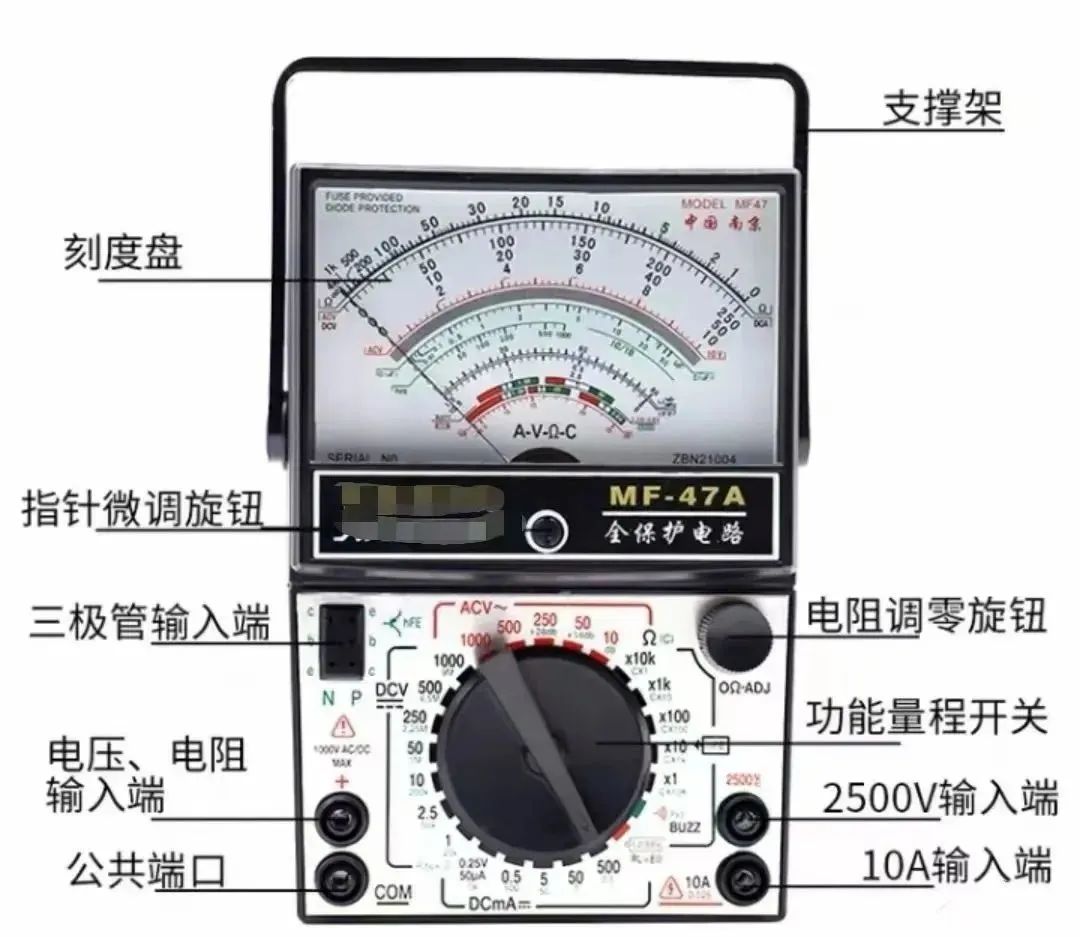The reason a multimeter can measure current, voltage, and resistance lies in its use of a sensitive galvanometer. When a small current passes through the meter, the needle will indicate a value.
However, the galvanometer cannot directly handle large currents, so it is necessary to connect some resistors in parallel or series with the galvanometer to shunt or reduce the voltage, thus enabling the measurement of current, voltage, and resistance in the circuit.


The Secrets of Measuring Current with a Multimeter

When measuring current, the multimeter acts like a meticulous detective. By connecting an appropriate resistor in series with the galvanometer, the current range can be extended.
By changing the resistance value, the measurement range of the current can be altered. During measurement, simply connect the ammeter in series with the circuit under test, with the red probe connected to the current inflow side and the black probe connected to the current outflow side, making the current value clear at a glance.

The Techniques for Measuring Voltage with a Multimeter

When measuring voltage, the multimeter showcases its versatility. To measure DC voltage, simply connect an appropriate resistor in series to reduce the voltage, thus extending the voltage range.
For measuring AC voltage, a half-wave rectifier circuit must be added in parallel and series to convert the AC into DC for measurement through the galvanometer.
During measurement, just connect the multimeter in parallel with the circuit under test, paying attention to the polarity of the voltage at the test point, with the red probe connected to the high potential side and the black probe to the low potential side, making the voltage value easily manageable.

The Magic of Measuring Resistance with a Multimeter

When measuring resistance, the multimeter reveals its magical capabilities. The galvanometer is connected in series and parallel with appropriate resistors, along with a dry battery.
When current flows through the measured resistor, the resistance value can be determined based on the current magnitude. By changing the shunt resistor value, the resistance range can be altered.
Before measuring, simply zero the multimeter, select the resistance range, short the red and black probes, and adjust the zeroing knob until the needle points to zero, allowing for measurement to begin.

Preparation and Zeroing Before Using a Multimeter

Before using a multimeter, zeroing is an essential step. This is because the multimeter uses a dry battery, and over time, the supplied voltage will decrease.
Therefore, when the red and black probes are shorted in the resistance range, the needle may not point to zero. At this point, it is necessary to adjust the zeroing knob to ensure the needle points to zero when shorted, reducing measurement errors.

The Wide Applications of Multimeters

The multimeter, the “Swiss Army Knife” of the electronics field, can not only measure DC current, DC voltage, and AC voltage but also measure resistance, capacitance, and semiconductor components. Whether for home repairs, electronic projects, or industrial production, the multimeter is an indispensable tool.

Precautions When Using a Multimeter

However, there are some precautions to take when using a multimeter. First, check the condition of the meter before use, and familiarize yourself with the functions of the various switches, knobs, measurement sockets, and dedicated sockets.
Secondly, if you are unsure of the circuit’s current and voltage levels, start with a high range and gradually switch to the appropriate range for the circuit’s voltage and current.
Additionally, do not switch ranges or settings during testing to prevent damage to the instrument or personal injury.
After use, set the range switch of the analog multimeter to the highest voltage range, and turn the digital multimeter range switch to the OFF position. If not used for a long time, also remove the multimeter battery to prevent leakage and corrosion of the multimeter.
The multimeter, a seemingly ordinary yet powerful tool, hides many unknown secrets. Only by deeply understanding its working principles and usage methods can one fully utilize its important role in electronic testing.